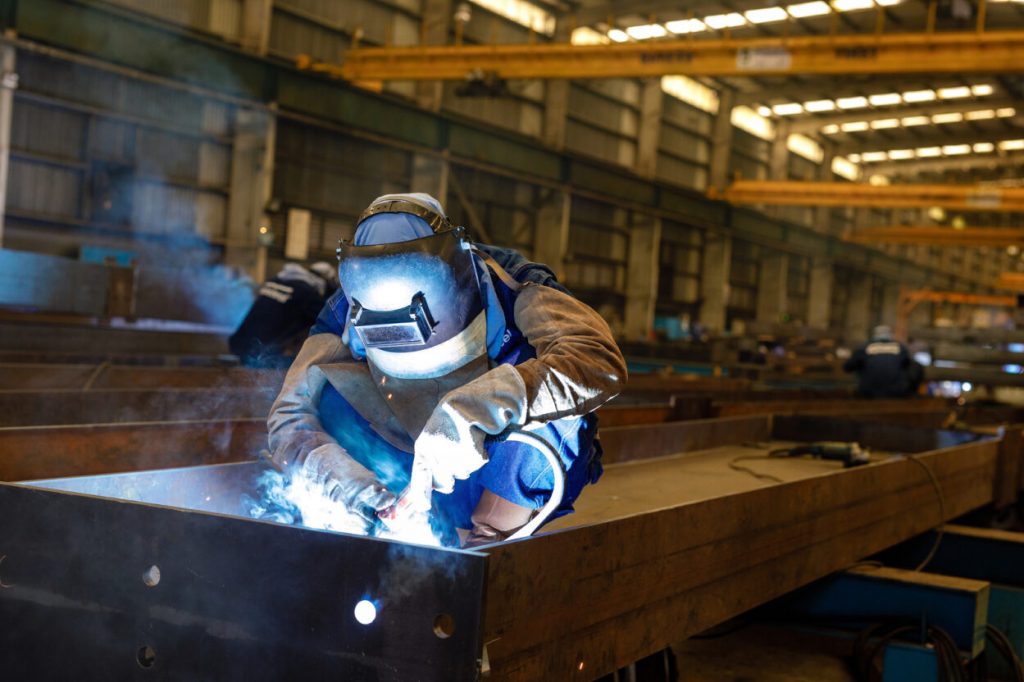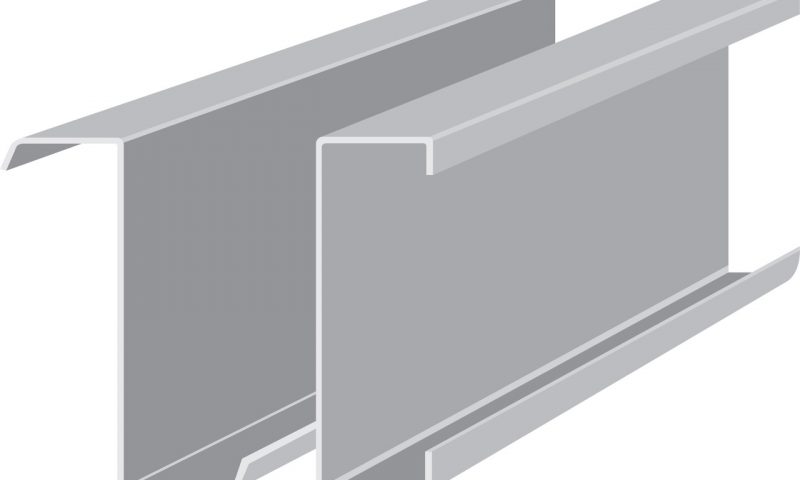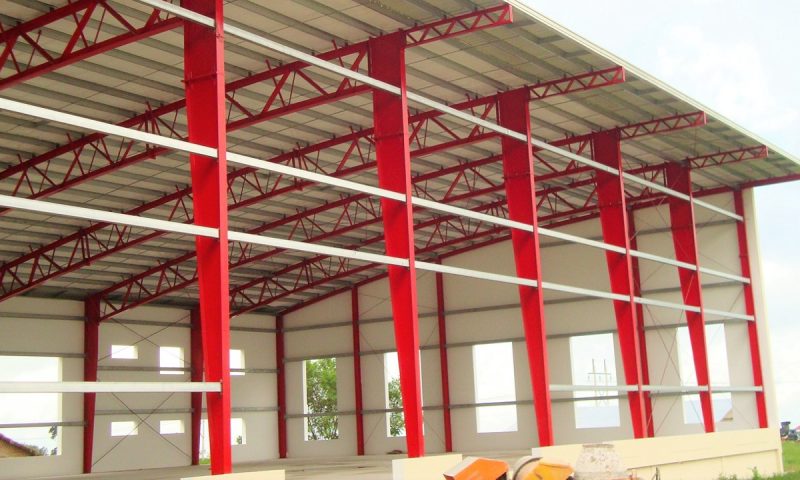For large-scale construction projects such as factories, warehouses, multi-level parking lots, shopping centers, and conference centers, load-bearing capacity is one of the most crucial factors. Therefore, the use of steel structures with excellent load-bearing properties is becoming increasingly common, ensuring the safety of the construction project. Let’s explore the process of structural steel and plate fabrication with Pebsteel in the article below.
See more: Quotation Of Warehouse Construction Costs Updated In 2023
1. What is Structural Steel And Plate Fabrication?
Structural steel and plate fabrication involves manufacturing steel components such as beams, columns, and rafters according to the design at the factory. This fabrication process needs to adhere to strict procedures to produce steel components that meet the standards. Effectively controlling the production process of steel components will provide favorable conditions for steel frame installation during construction.

2. The Process of Structural Steel And Plate Fabrication
The process of manufacturing and fabricating structural steel and plate for the factory plays a crucial role, as the accuracy and quality of the components, as well as the level of completion of the pre-engineered steel building project, entirely depends on the production process.
Once completed, the fabrication drawings will be forwarded to the structural steel fabrication department. The structural steel components will go through a production line consisting of 7 steps:
2.1. Step 1: Steel cutting
In this step, the steel plates will be cut into the shapes and dimensions specified in the technical drawings. There are two common types of structural components:
- Pre-fabricated Steel: Also known as shaped steel with components like U, H, or C-shaped steel, this type is pre-cast during production and only requires a cutting process to remove excess material, ensuring the structure aligns with the original design.
- Synthetic Steel: This type of steel is cut from steel plates and processed into custom shapes. Subsequently, these smaller steel plates are assembled to form complete structural components.
Some modern steel cutting technologies include automatic Laser cutting, Plasma & Oxygen automatic cutting, circular saws, band saws, slitting machines, shearing machines and automatic oxy-fuel cutting machines, etc.
2.2. Step 2: Bending
This stage involves punching holes for the cleats and using bolts to fasten the steel components or connect beams to columns. Based on the design of the steel structure, the flanges and webs of the components, after cutting, will be positioned in their respective locations and temporarily connected using welding.
2.3. Step 3: Welding
After being positioned and temporarily assembled with welding, the steel components are placed into an automatic welding machine. To ensure that the welding is done correctly and of the highest quality, the weld bead must first be visually inspected for surface imperfections. Then, the quality of the weld is checked using ultrasonic testing or magnetic particle inspection methods.thiếu link xem thêm
2.4. Step 4: Adjusting
During the welding process, high temperatures can cause the components to warp. Therefore, to ensure that the components are highly accurate during installation, they need to be adjusted, straightened, and inspected before proceeding with the next steps.
2.5. Step 5: Welding of reinforcing ribs
After the components have been welded and precisely adjusted, the construction of the reinforcing ribs and cleats is also carried out using welding. This is a crucial step in the process of structural steel fabrication, performed by skilled workers to ensure maximum accuracy.

2.6. Step 6: Shot blasting cleaning
The processed components need to undergo surface treatment to remove water stains, oil, grease, and other impurities. In this step, the steel components will be cleaned by surface rust removal and treated with shot blasting machines. Afterward, they will be prepared for the painting process and final finishing touches.
2.7. Step 7: Coating
During the processing and use of structural steel, a high-quality coating of paint will protect the steel components from the effects of the surrounding environment, greatly influencing their durability and lifespan. Typically, the surface of the components will be coated with one layer of anti-corrosion paint and two layers of paint in the desired color according to the customer’s requirements.
3. Choosing Pebsteel for Prefabricated Steel Structure Construction
To ensure that the process of structural steel and plate fabrication meets standards, it is crucial to collaborate with a reputable construction unit with years of experience in the fabrication and erection of steel structures. With 30 years of experience in the industry and an excellent team of engineers, Pebsteel is committed to bringing the most advanced pre-engineered steel technology in the world and providing the best services to meet customer requirements in all fields. . To date, Pebsteel has successfully completed over 6,000 high-quality projects in numerous countries.
Pebsteel imports raw materials from major countries such as Japan, South Korea, and China, ensuring full certification of quality. All materials meet ASTM quality standards (USA). Additionally, Pebsteel takes pride in being one of the pioneering enterprises to apply the latest international standard design applications, such as MBMA, AISC, AWC, AISI, and IBC.

4. Conclusion
Above is information about the process of manufacturing and fabricating structural steel. If customers need comprehensive solutions for Pre-Engineered Buildings and Structural Steel, please contact Pebsteel via email at Marketing@pebsteel.com.vn or by phone at +84 908 883531 for immediate consultation.







